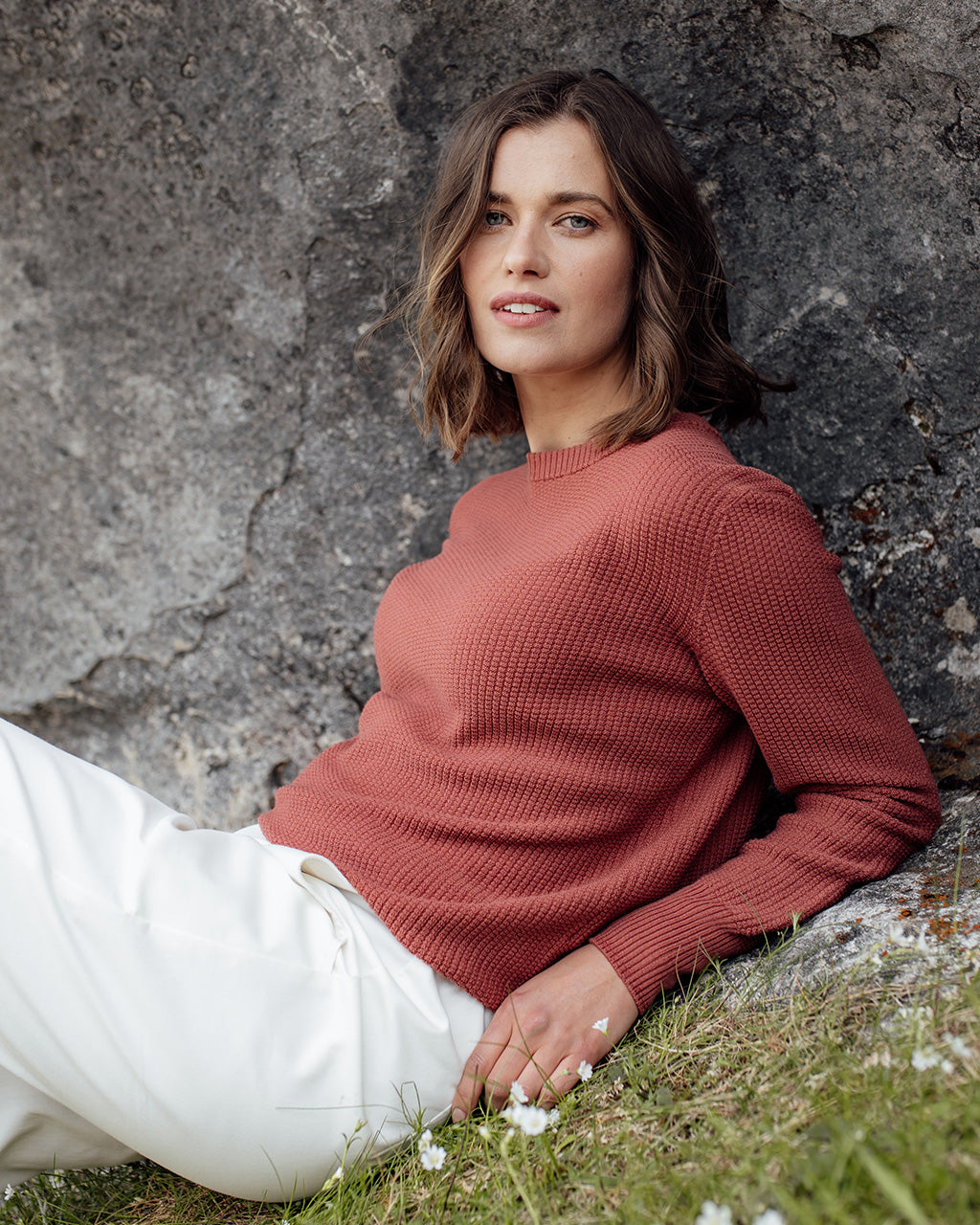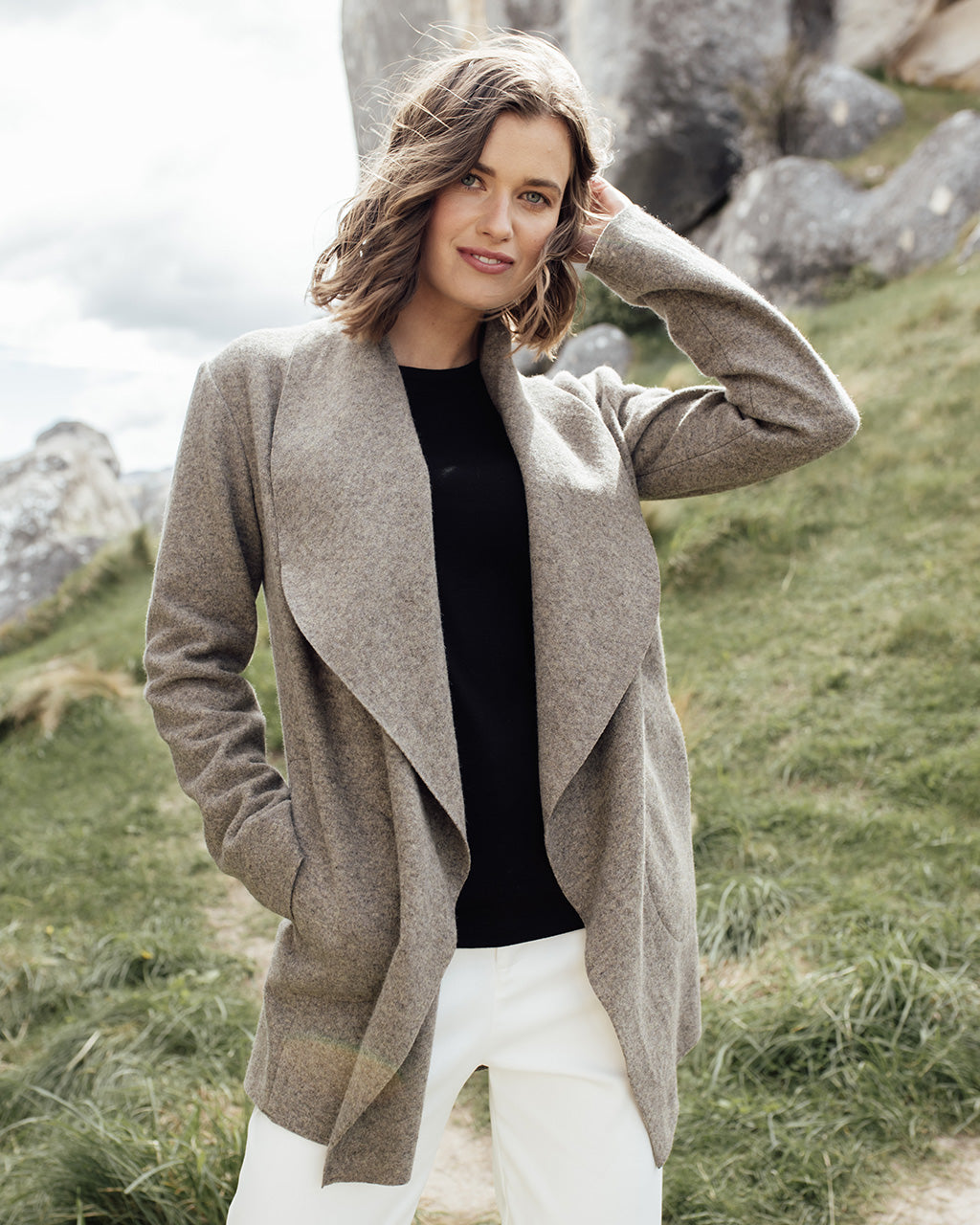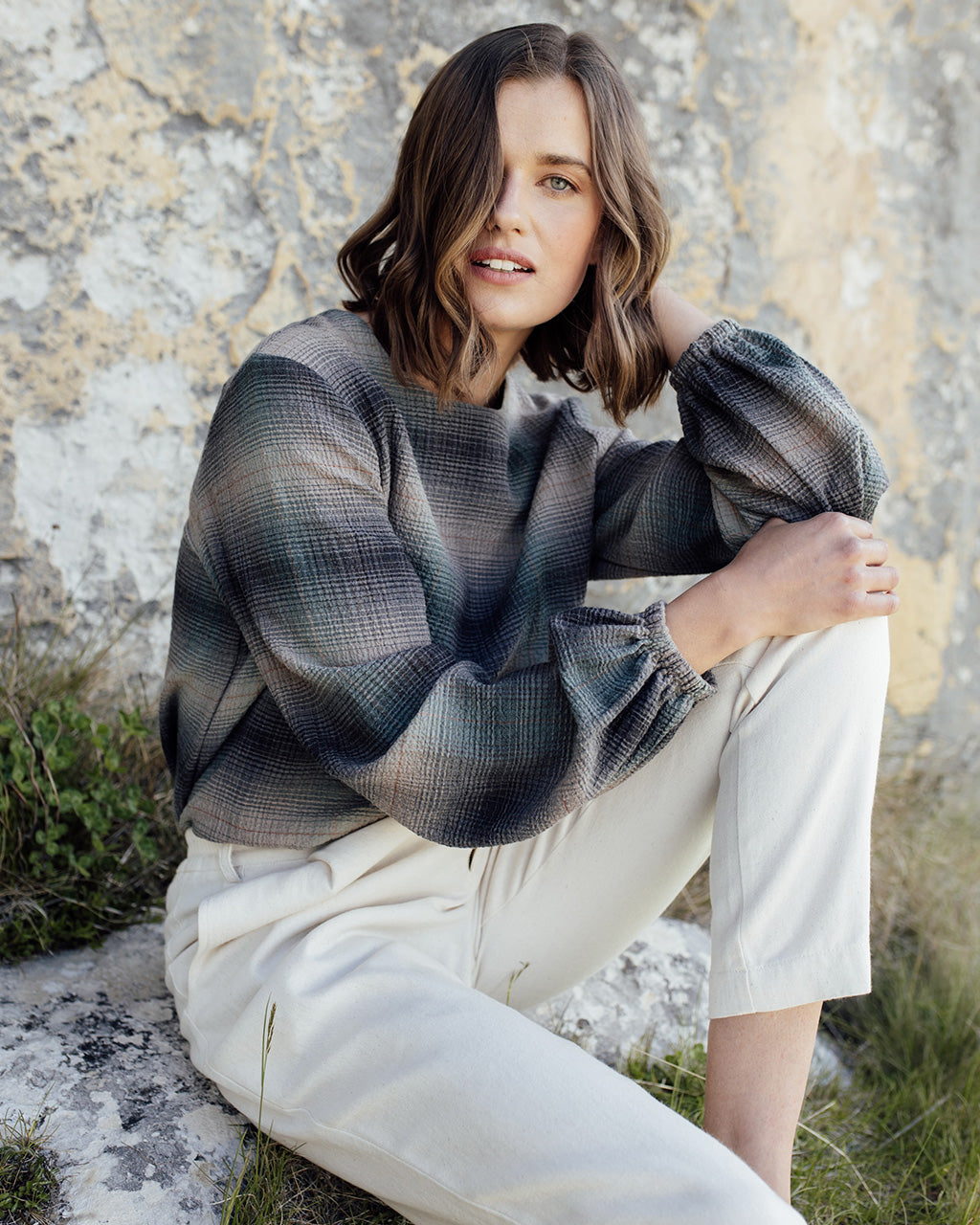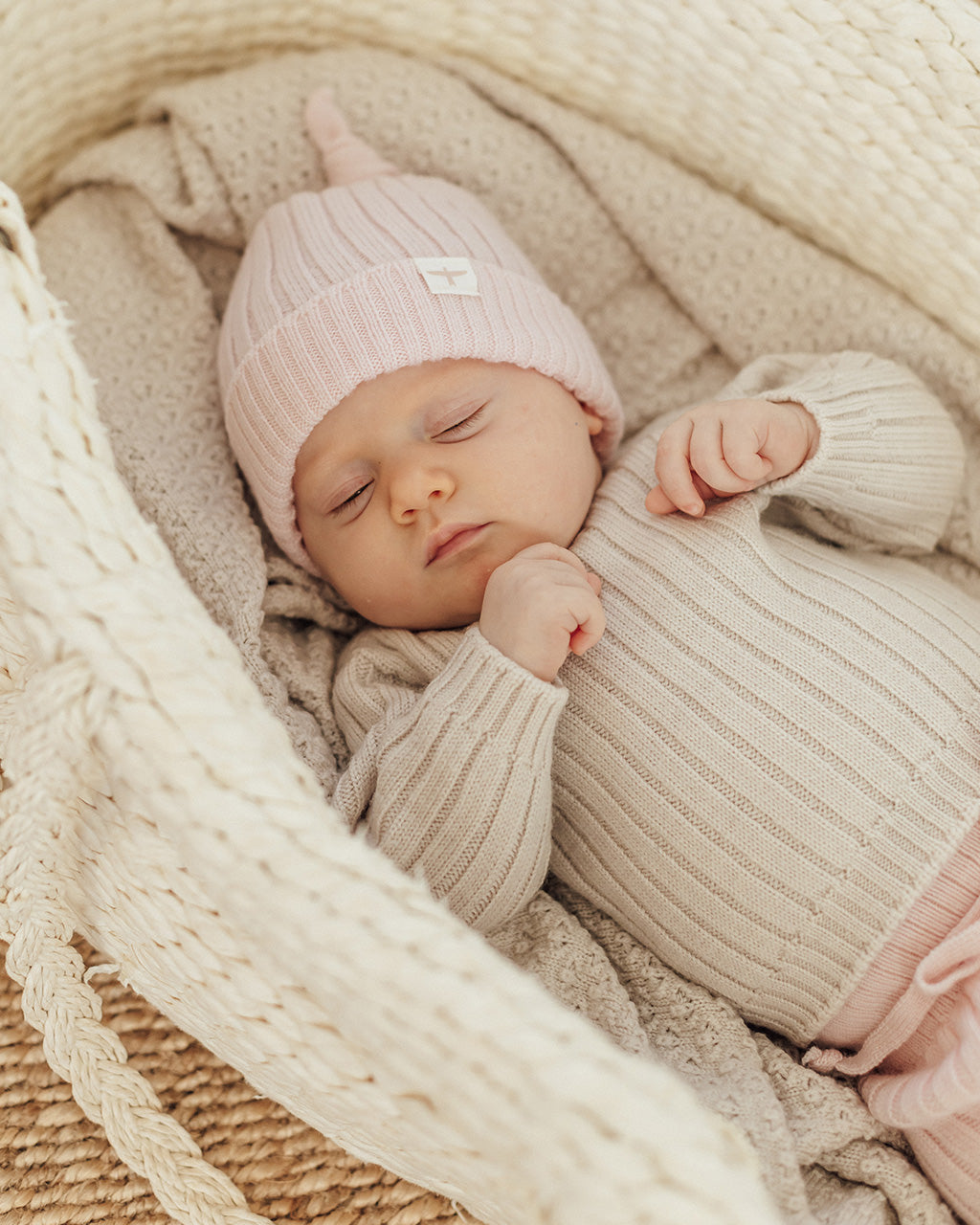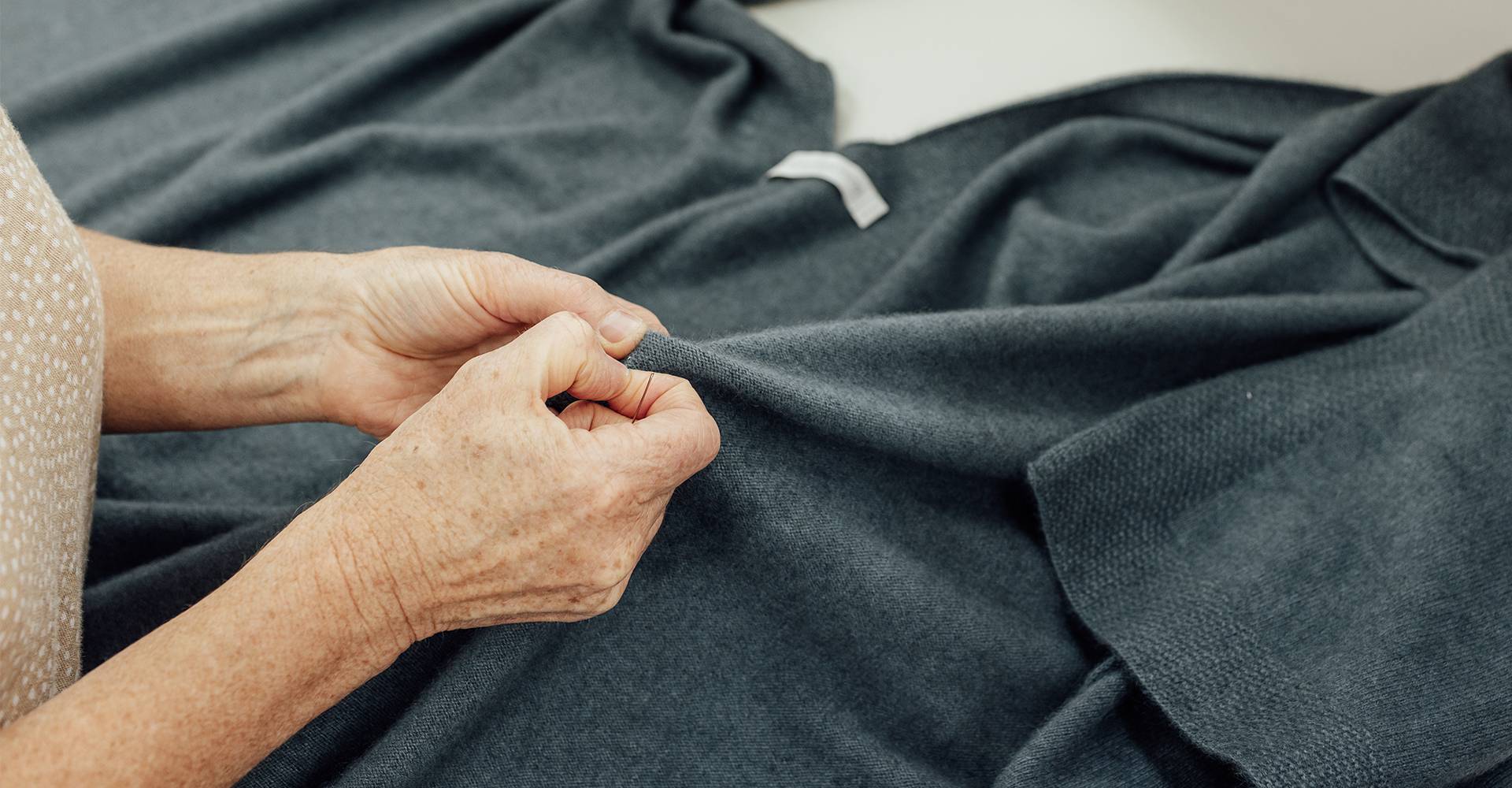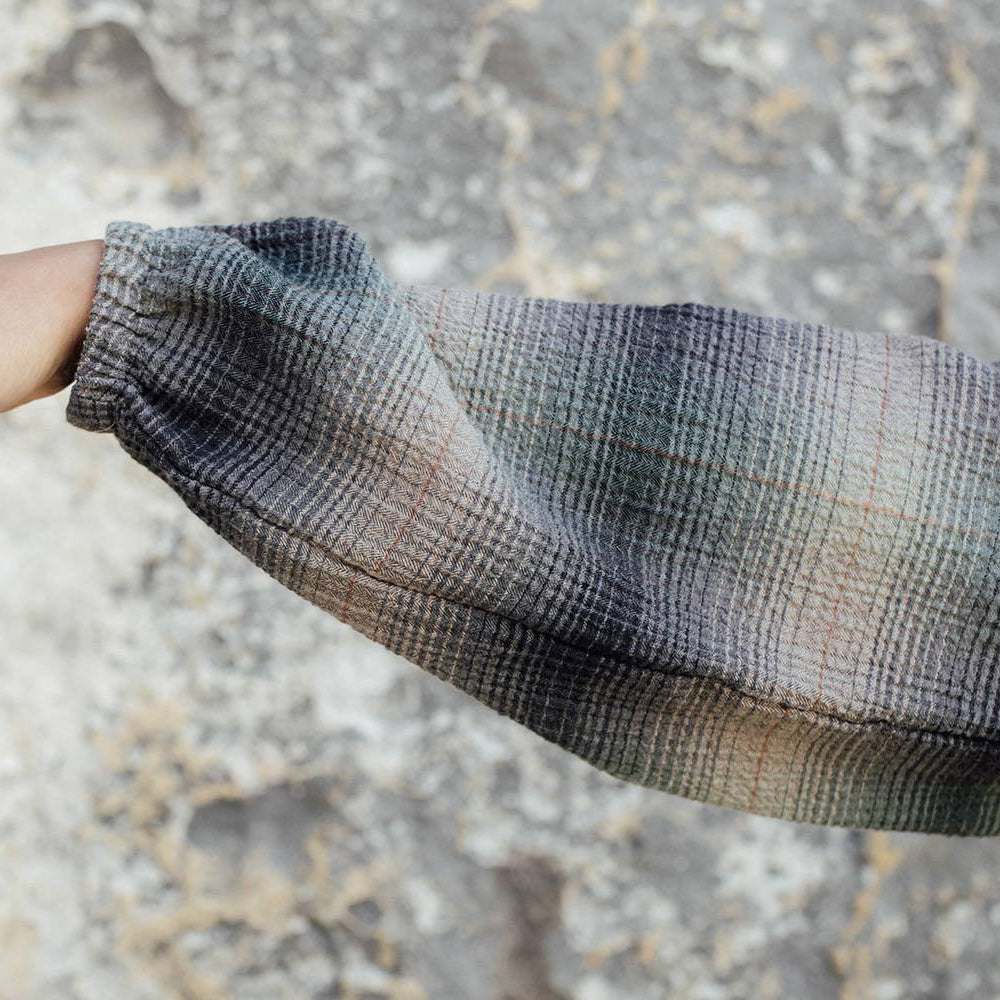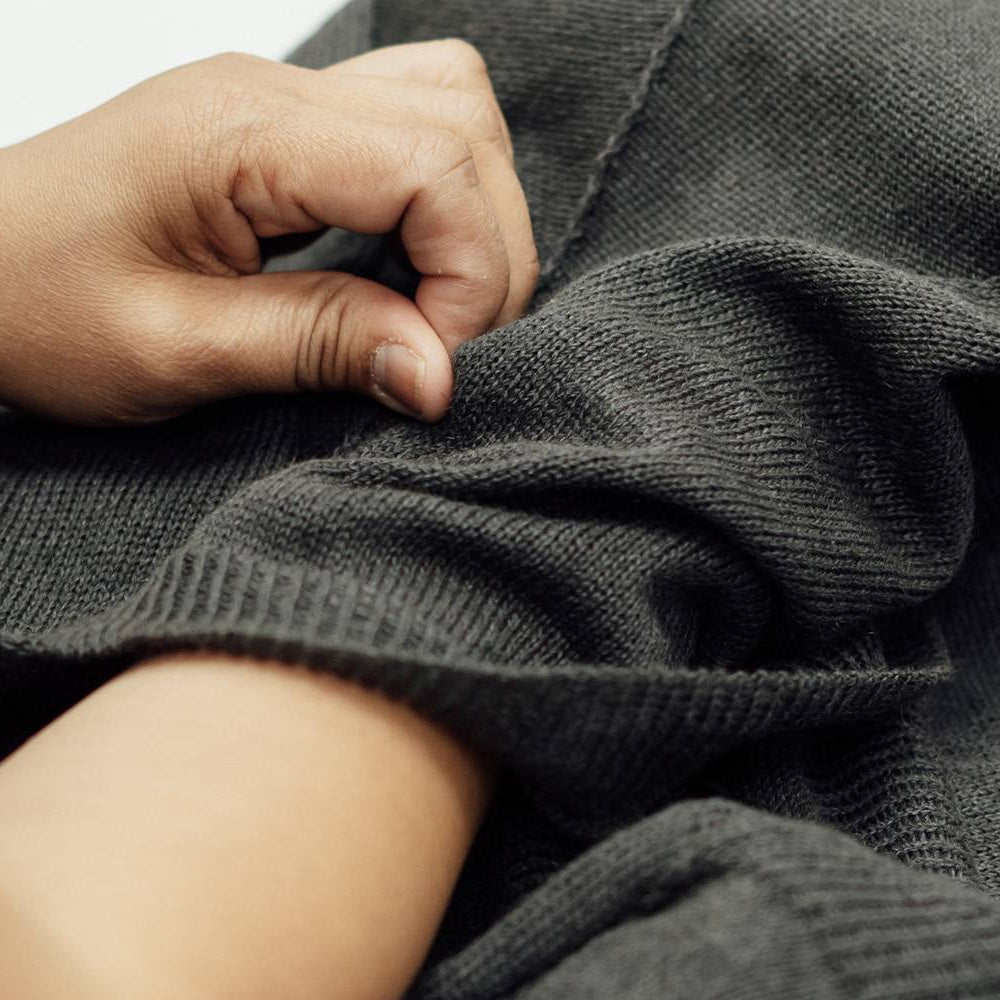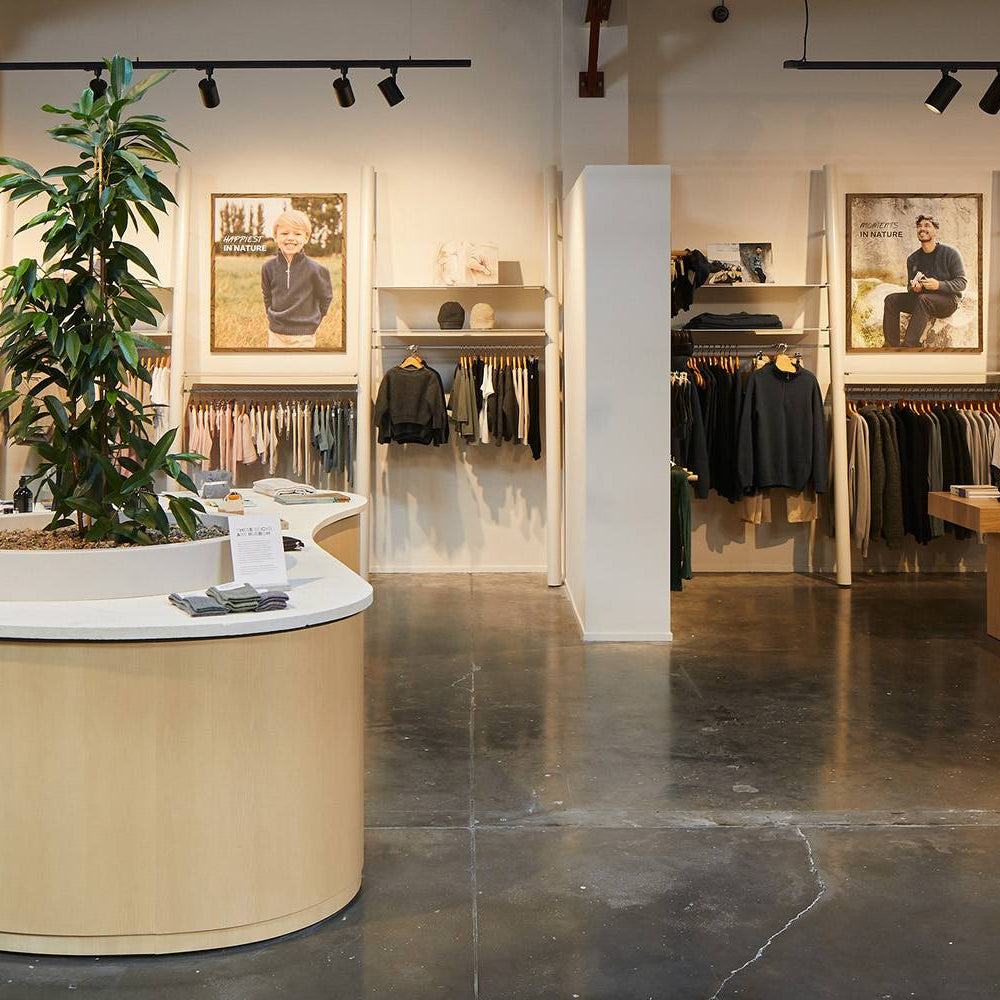It’s no secret that the quality of clothing has dropped in recent decades thanks to fast fashion. In order to keep prices low, corners are cut, low quality fabrics are used, and finishes are much less refined. A quick flick through the rails of any vintage shop or op shop will show that high street clothing made 20 or 30 years ago is far superior to its modern-day equivalents. But, while fast fashion might seem inescapable, there are still many committed brands out there who continue to make high quality clothes with decades – rather than weeks or months – of wear in mind. We count ourselves among them. The key to separating quality from fad is knowing the telltale signs of a well-made garment, so here’s what to look out for.
The seam check
When checking a garment for quality, seams are a great place to start. Cheaper garments tend to be made with a longer stitch length because it uses less thread, so if you gently pull at the seams (sometimes known as the “tug test”), gaps will appear between each stitch. Not only does this provide less protection against wear and tear, it also means the seams are more likely to unravel. A good quality seam should hold nicely when pulled – a sign of a garment made with durability in mind.
It’s worth noting that stitch length can vary according to fabric choice too. For instance, a stretch fabric may need a longer stitch length to allow for movement. So, while it’s a good place to start, check a few of our other pointers too, to be extra sure.
Natural fibres
You’ll know by now that we’re huge proponents of the use of natural fibres. They’re better for the environment, they have built-in benefits such as being moisture-wicking and antimicrobial, and they generally represent higher quality than the likes of polyester. Synthetics have taken over fashion because they’re a cheap alternative, so if a brand uses majority natural fibres it shows a real commitment to quality over cost-saving.
“We only use the highest quality fibres in our fabrics, so we are starting with the right basis for beautiful, high-quality fabrics. This comes right down to the stitch quality of a garment to ensure it won’t pill or stretch.” – Peri Drysdale, Founder and CEO, Untouched World
High quality fabric
While the use of mostly natural fibres is a good clue that brands are investing in durability, not all fabrics are made equal - but there’s a quick trick to assess the quality of what you’re considering buying. If you place your hand inside the garment and it shows through, that can be a sign of low-quality fabric. Unless they’re sheer by design, even lightweight fabrics should be dense enough to provide full coverage.
Tidy finishes
Raw edges, already unravelling stitching, threads that haven’t been trimmed, loose buttons, and mismatched seams are all signs of a rushed production process. Garments that are made to last are made with care; and the people who make them are given enough time to apply that care to every stage of production. Every detail on a garment should feel as though it’s been finished to a high level, so look out for neatly concealed seams and hems, sturdy button holes, secure buttons, well-hidden zips, reinforcement at areas of high wear and tear such as pockets, and neat and even stitching.
A great fit
Fast fashion often fits so poorly, it’s become a running joke online as customers post photos of what they ordered versus what they received. The ‘what I ordered’ photo is of course beautifully fitted to the model while the ‘what I received’ photo will have glaring issues such as wildly long sleeves, a sagging waistband, or impossible proportions. Well-made clothes have been through rigorous fitting and sampling to ensure that the fit is perfect before it ever reaches the customer. If it’s made to last, it should fit well from the first try-on.
“Our garments are wear tested on many body shapes and sizes to make sure our styles are comfortable on everyone. We know an exacting fit is essential.” – Peri Drysdale
It holds its shape
High quality fabric should have good ‘recovery’ – meaning it springs back into shape after being stretched. Just like the tug test, take a section of the fabric and gently stretch it. If it snaps back into shape - brilliant. If it sags and droops then that’s a sign it won’t age very well and will be difficult to maintain in the long term.
The maker offers a warranty or repair
Much of what makes a garment last comes down to the way it’s made, but aftercare plays a crucial part too. Check online, or ask instore – does the brand offer a warranty or a guarantee? Or does it have a repair service which makes maintaining your garment easy? If the brand you’re buying from takes a holistic approach to longevity, that’s a great sign that what you’re buying will last.
Want proof that our clothes are made to last? Take a peek at Peri’s 18-year-old Untouched World merino top which looks as good today as it did when it was brand new.

